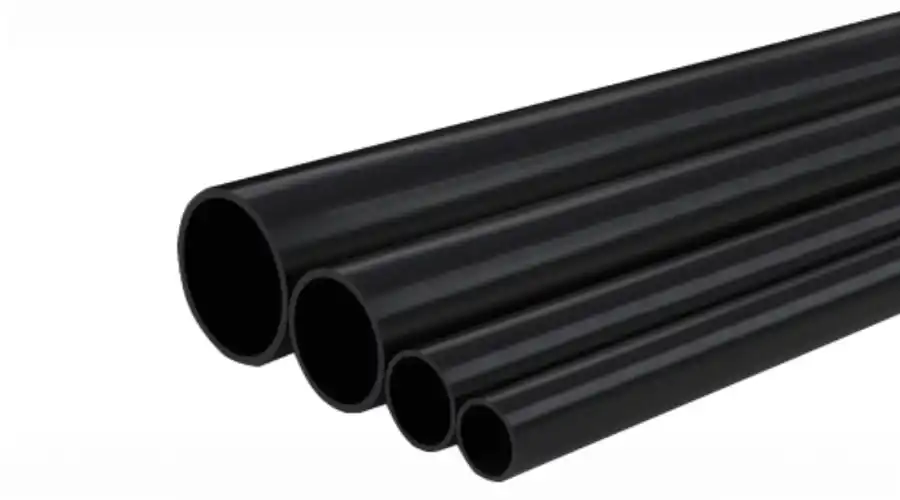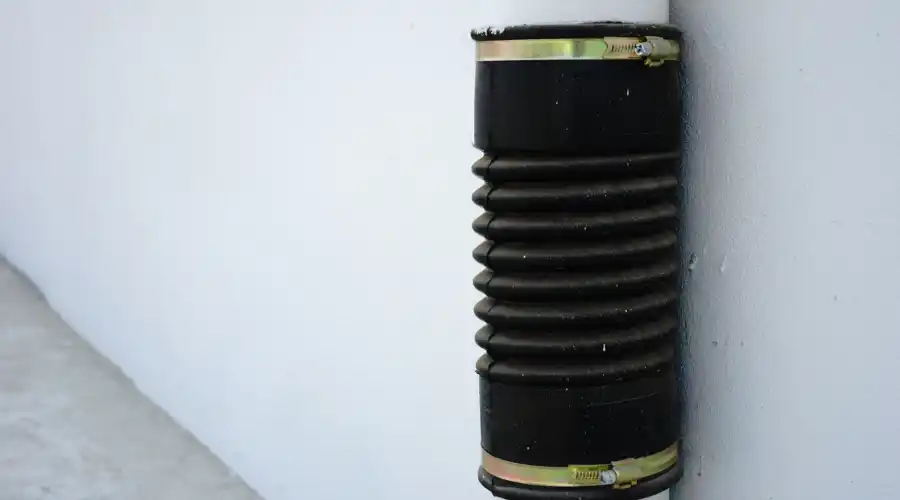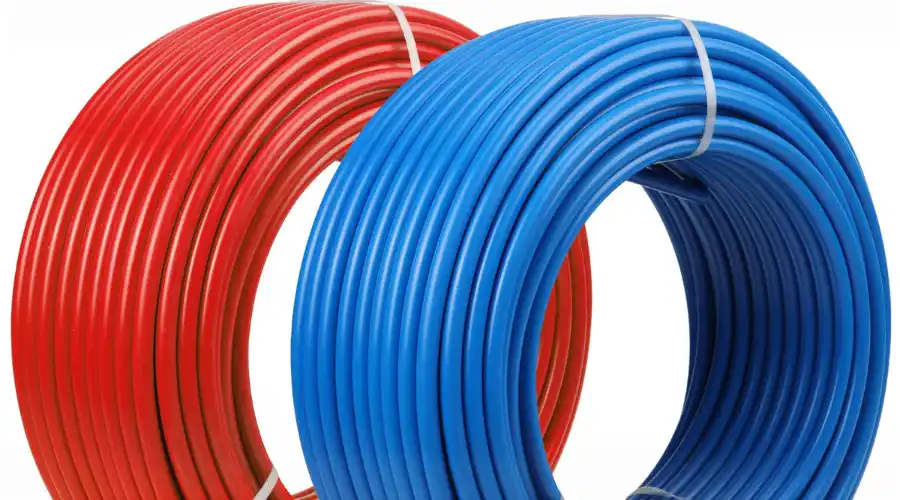Ever thought about plumbing and its systems? From bringing water to your house to getting rid of waste, the right material is key to efficiency, durability, and safety. And it is not only money; there are also reliability and long-term performance. In this blog, we will look at how the materials you choose shape the plumbing systems you depend on in your daily life. So, let’s take a deep look at what keeps a plumbing system functioning well!
Types of Plumbing Pipes and Their Uses
ABS Pipe

Acrylonitrile Butadiene Styrene (ABS pipe) is made of a thermoplastic resin, and in appearance, it resembles PVC pipe, except for its black hue and softer finish. The pipes are easy to handle and install but strong enough to take the heavy hand of use. The impact resistance of these pipes has been given importance, as compared to PVC pipes, thereby decreasing the chances of cracking or breaking. All these factors make them suitable for underground or outside plumbing, especially drainage and venting sewage.
Flexi Pipe

Flexi pipes have been a fresh entry into home plumbing and are usually made of a blend of stainless steel and plastic. The pipes offer good flexibility and can easily be bent around corners to fit tight spaces. Installation is easy, and no soldering or unique tools are required. These pipes find their application in connecting water heaters, dishwashers, or whatever appliances where flexible fitting becomes imperative.
Galvanized Steel Pipe and Cast Iron
Galvanized Steel Pipes are steel pipes coated with zinc to protect them against corrosion and rust. These piping materials fairly good used in plumbing applications in earlier times, as most uses were inclined towards high water pressures and good strength. They have, however, been obsolete because they tended to develop rust and corrosion over time, and because they were much harder to install than their counterparts. These pipes can be seen in outdoor applications such as irrigation and existing homes.
PEX Pipe

The rise in the popularity of PEX piping has come very much in the last few years because of its flexibility and ease of installation. PEX piping is made of cross-linked high-density polyethylene that has good resistance against wear and tear and offers the facility to expand and contract with temperature changes. Bending PEX does not require fittings, thereby reducing connections and simplifying the installation process. These pipings best serve hot and cold water systems and retrofitting is easy with them.
PVC Pipe
PVC is one of the most commonly used plumbing materials in homes, especially for drain-waste-vent systems. One of the advantages of the rigid plastic pipe is its lightweight nature, coupled with low cost and high corrosion resistance. Such pipes have smooth inner surfaces, which minimizes clogging. These pipes can best serve drain lines and vent systems, while also accommodating cold-water supply lines.
Rigid Copper Pipe
Copper piping has, for several years, been the plumbing material of choice. It is noted for being durable, dependable, resistant to bacteria, and capable of combining with corrosion. High water temperatures can be accommodated, which is ideal for hot water lines. Being recyclable makes copper environmentally friendly. These pipelines are great for hot and cold water supply lines, especially in homes where water quality is of utmost concern.
Plumbing Fixtures and Their Functions
Water Distribution Systems
Plumbing systems are designed to deliver potable water from a source to homes, offices, schools, hospitals, and other public places for drinking, cooking, bathing, and other activities. The water distribution system that uses plumbing fixtures includes Sinks, Toilets, Bathtubs, Showers, Faucets, Taps, and Drinking Water.
Waste and Drainage Systems
Plumbing facilities help remove waste and used water from homes, buildings and streets. They are used for directing wastewater to sewer lines, or septic tanks, to ensure sanitary disposal and prevent contamination.
Heating Systems
Plumbing is an integral part of central heating and water heating systems, especially in colder climates. They can be employed in hot water boilers, radiators, and underfloor heating, circulating heated water through pipes to warm living or working spaces.
Gas Supply Systems
Plumbing systems can be used as gas supply systems that deliver natural gas or propane for kitchen appliances like stoves, ovens, water heaters, and fireplaces.
Irrigation Systems
Plumbing works to convey water used for irrigation in farming and for landscaping. Different types of plumbing systems come into existence through pipes, hoses, and sprinklers to reach out to plants, lawns, or crops wherever the activity in play cannot count on natural rainfall.
Fire Suppression Systems
Plumbing includes fire suppression systems that deliver water or other agents for the prevention and extinguishment of fire within buildings and facilities.
Plumbing Sealants and Adhesives
Sealants
- Pipe Joint Compounds also called plumber’s putty a soft sticky material used to seal threaded pipe joints and fittings, often used to create a watertight seal.
- Teflon Tape (PTFE Tape) is a thin, flexible tape that is used to seal threaded pipe joints. It is wrapped around the threads of pipe fittings before joining them to create a leak-proof seal.
- Silicone Sealant is a rubber-like material used for sealing water seepage areas such as around bathtubs, sinks, shower enclosures, and countertops.
- Caulk is a flexible sealant available in acrylic or latex forms, often applied to gaps or cracks around plumbing fixtures, such as sinks, bathtubs, and toilers to prevent water from leakage.
Adhesives
- PVC Cement is a solvent-based adhesive specially formulated for bonding PVC pipes and fitting them together. They are applied to the surface of PVC pipes and fittings, chemically fusing into a permanent bond.
- ABS Cement is an adhesive used for bonding ABS pipes and fittings. Similar to PVC, ABS cement are applied to the pipe and fitting surfaces before joining them to create a strong bond.
- Epoxy Adhesive is a two-part adhesive made from resin and hardener, that is used for repairing leaks in pipes, especially in situations where other sealing options are impossible.
- Hot-melt glue is a glue that is melted and then applied to the plumbing components, especially in places where pipes are not exposed to extreme water pressure and temperatures.
Plumbing Tools and Equipment
- Pipe Wrench
- Adjustable Wrench
- Basin Wrench
- Plumber’s Tape
- Pipe Cutter
- Hacksaw
- Plunger
- Auger
- Tube Bender
- Pipe Vise
Conclusion
Selecting plumbing materials is one significant factor in the efficiency and longevity of a system. Among several materials, copper, PVC, PEX, or even galvanized steel could all be the best material options depending on cost, installation, and performance demands. The appropriate selection enhances long-term reliability, reduces maintenance expenses, and improves plumbing system performance which results in fewer repairs and a very efficient water management system.

